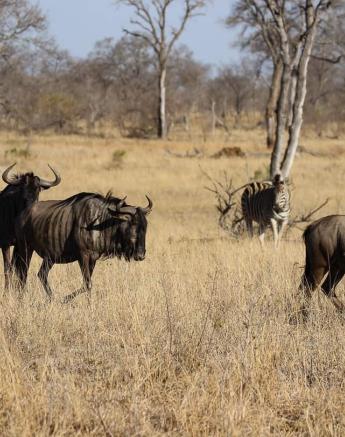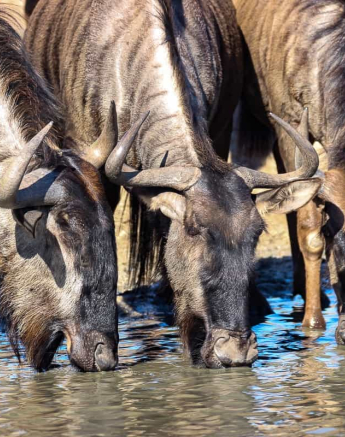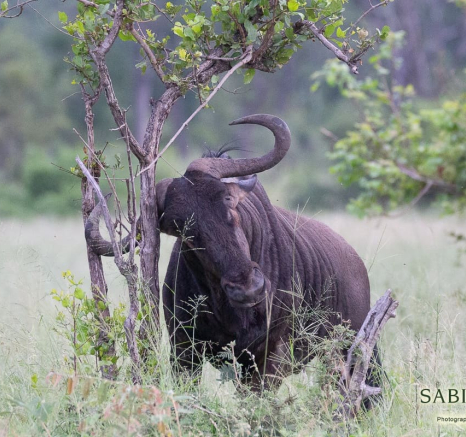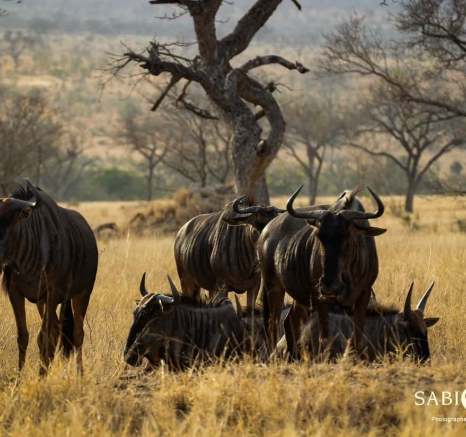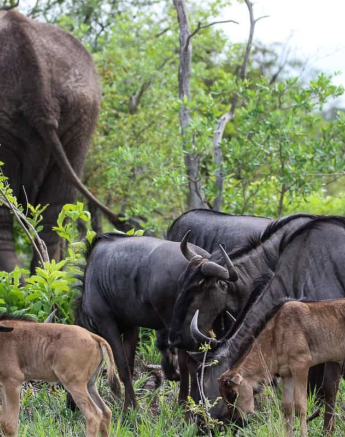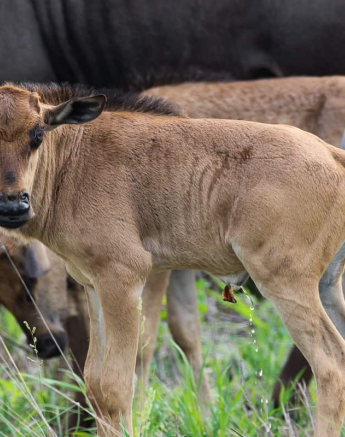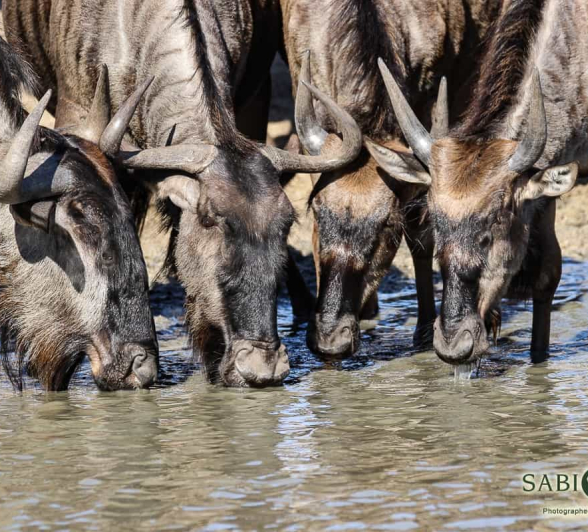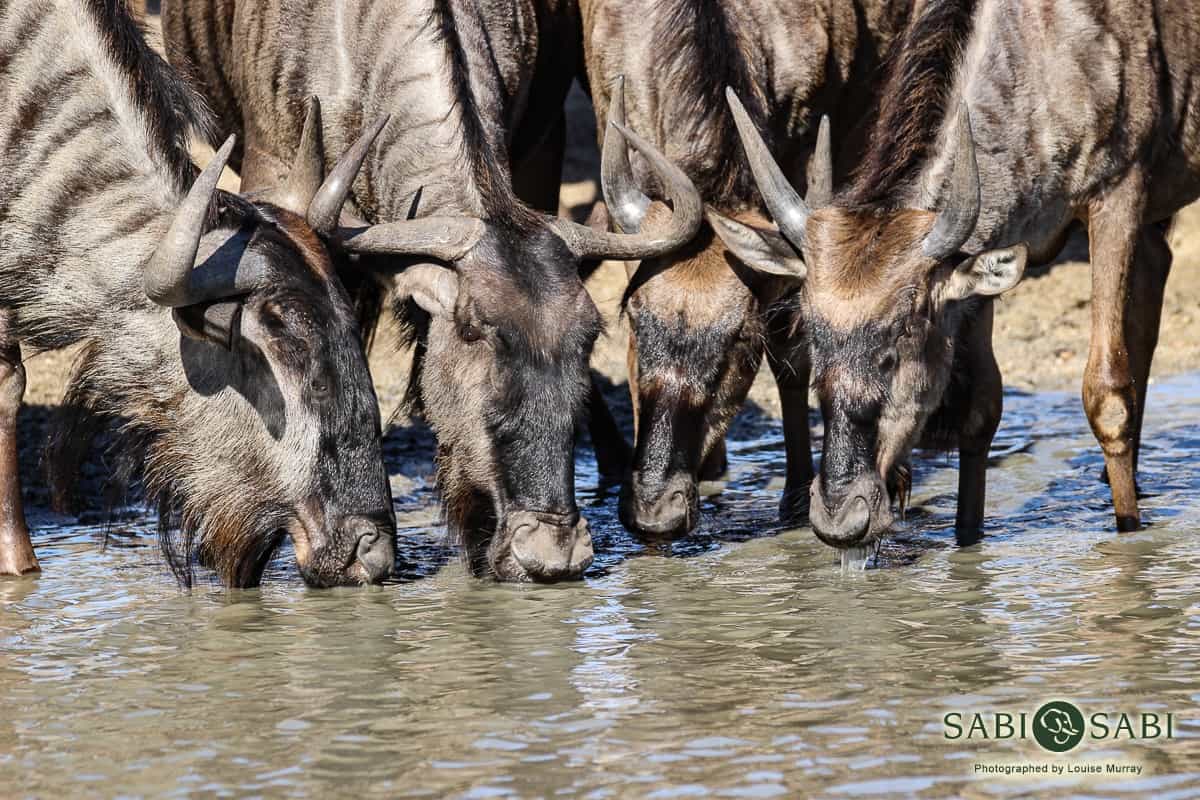Blue Wildebeest
on Mar 22, 2019Species name: Blue wildebeest
Scientific name: Connochaetes taurinus
Weight: Male: ± 250kg - Female: ± 150kg
Shoulder height: Male: ±1.5m - Female: ± 1.3m
General habitat: Open grasslands, savanna woodlands
Diet: Grazers, drink water regularly
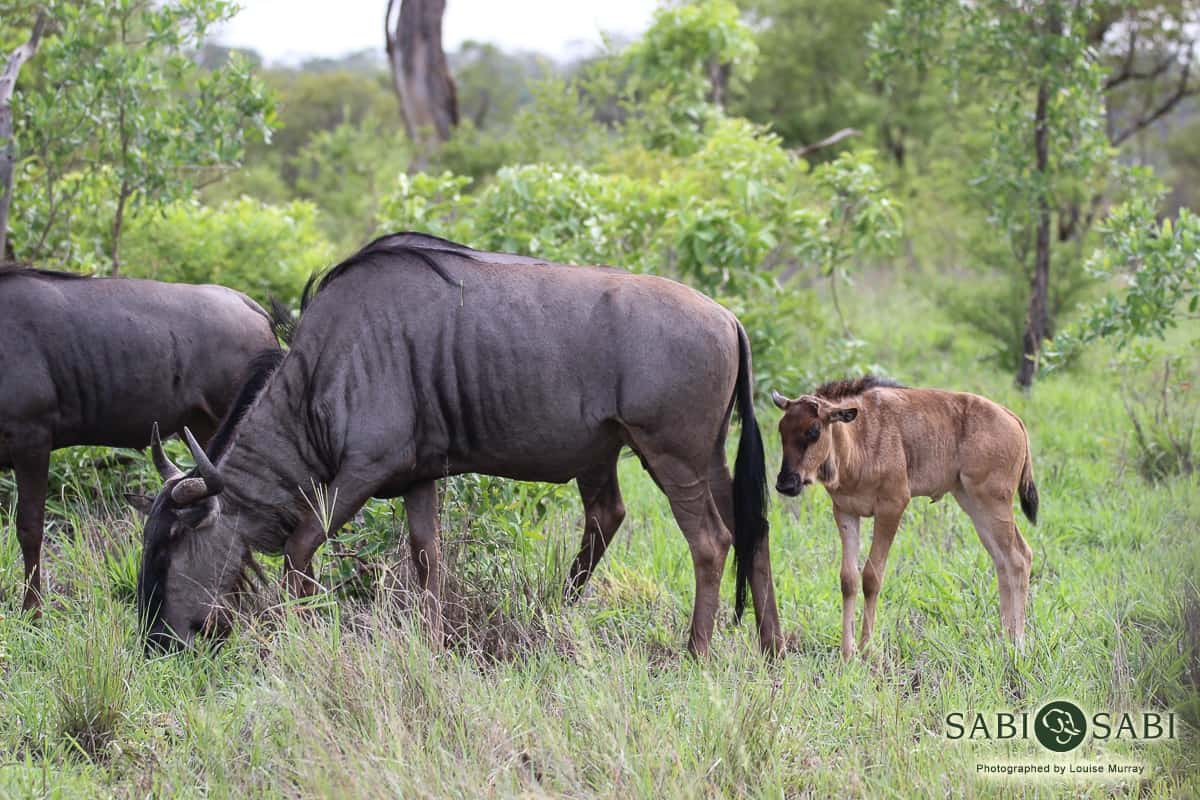
The “Brindle Gnu” is what this mammal is sometimes conically called, can be seen in most of Sabi Sabi open areas where wildebeest most likely like to hang around, being a plains mammal and traditionally a migratory mammal, the open areas are where they are adapted to be.
They get their other name from the darker strips on the shoulder and flanks, darker hairs that are also believed to help with thermoregulation (controlling the temperature of the body – dark attracting heat and light not, creating different gradients of warm and cool air). The gnu is what the wildebeest’s noise sounds like “Gnuu”
As I mentioned above, the Blue wildebeest is traditionally a migratory mammal, however, not the ones you will find here at Sabi Sabi. Blue wildebeest migrate to keep up with resources throughout the season changes, where resources are depleted, they will move to find more adequate resources and even though the wildebeest have many miles to cover here within the Sabi Sand Game Reserve and Kruger National Park, there is no need to migrate as our seasons will all be similar within the great area. We are also lucky enough to (on most occasion) have adequate resources.
A modification to accommodate with the migration in the way their bodies are designed, a slanted back, indication high positioned shoulders and long front legs, to help canter for long distances, canter is an energy efficient mode of locomotion.
You will however notice on your safari adventures here at Sabi Sabi that you might come across a herd/harem of wildebeest or one lonely bull. This is because wildebeest bulls will hold a territory, typically on an open grassy area with a sand patch used for a stomping ground. Males then actively mark the area with pedal glands in between their hooves which will leave a scent when walking, stomping or scraping an area, as well as a preorbital gland just under their eye (which you can see with the naked eye) where he will scrape up against rubbing posts, bushes and shrubs or even roll around in the sand and mud. You might also notice piles of dung in certain areas - this is what we call a midden or “lek” and is also a form of marking territory.
Females on the other hand will have what is referred to as home ranges. The female will move from area to area looking for the most ideal place that has good resource and a strong bull to mate with and raise calves. Once females arrive, he will then try his best to herd the females and keep them, chasing out any unwanted intruders. A female wildebeest will have a gestation period of 8 – 8.5 months, giving birth to one calf weighing ± 20kgs. The baby wildebeest is one of the most precocial (developed at birth), being able to get up and join the herd in a couple of minutes, no doubt an adaption for their traditional migratory behaviour.
You should be able to see these little sprouts of joy in mid-November/December time here at Sabi Sabi, as that is out rainy season, providing mom and baby with enough food and cover.
My memorable sighting
Spring and summer time are some of the best times for me as babies always make things sweeter. My most memorable moment is witnessing the new born calves. I love watching them as they, from the moment they are born, still need to imprint on mom and will even move to the closest thing to see if it’s mom. Many special moments when watching the new borns become familiar with their surroundings.
Photo content
